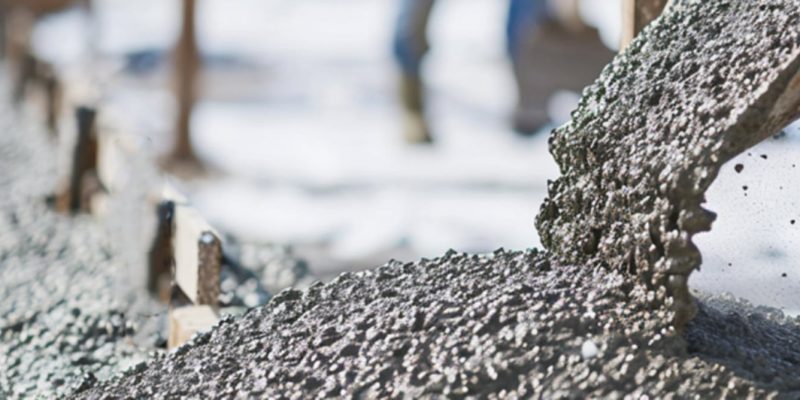Welcome to our guide on pouring cement in cold weather! Living in Des Moines, where temperatures can dip, it’s crucial for homeowners and contractors alike to understand how weather affects cement work. Let’s dive into why temperature is so important and how to ensure your cement projects are successful, even when the thermometer drops.
Why Temperature Matters When Pouring Cement
The Science Behind Cement Setting
Cement sets through a chemical reaction called hydration. This process is temperature-sensitive – too cold, and the reaction slows down, compromising the cement’s strength.
Risks of Incorrect Temperatures
Inappropriate temperatures can make or break a cement project. If it’s too cold, the cement may not set correctly, leading to weaker structures. Pouring in temperatures that are too low poses risks such as delayed setting times and potential frost damage. This is especially pertinent in Iowa’s colder months, where temperatures can unexpectedly fall, impacting outdoor cement work.
In Des Moines, where winter temperatures can often drop below freezing, and summer days can be sweltering, understanding and managing these temperature risks is essential for any successful cement project. Proper planning and temperature management ensure that the cement sets correctly, providing a strong and durable foundation for your construction project.
How Cold Can It Be to Pour Cement?
Optimal Temperature Range for Pouring Cement
Experts agree that the best temperature for pouring cement is between 50°F and 60°F. In this range, the hydration process occurs efficiently, ensuring strong and durable cement.
Threshold Temperatures for Cold Weather Pouring
But how cold is too cold? Generally, pouring cement at temperatures below 40°F is risky. Below this threshold, the hydration slows significantly, and below freezing, the water in the cement can freeze, causing expansion and cracks. In Des Moines, where winter temperatures can be unpredictable, it’s essential to monitor the weather closely when planning a cement project.
How Temperature Affects Concrete
Effects of Cold Weather on Concrete Strength
Cold weather significantly affects the strength and durability of concrete. When temperatures drop, the hydration process slows down, leading to a longer setting time and a weaker final product.
Freezing Risks
The risk of freezing is a major concern. If the temperature drops too much during the setting process, the water inside the concrete can freeze. This not only stops the hydration process but also leads to expansion, which can cause cracks and structural weaknesses in the concrete. For Iowa homeowners and contractors, this means always being prepared for a sudden temperature drop, especially during late fall and early spring.
Other Things to Consider When Pouring Cement in Cold Weather
Preparation and Planning: Good preparation is key to successful cold weather cement work. This includes monitoring weather forecasts and choosing days with favorable temperatures. Also, prepare the site by clearing snow and ice, and if necessary, pre-warming the ground.
Use of Additives and Insulating Techniques: There are ways to combat the cold. Additives can accelerate the hydration process, making it safer to pour in lower temperatures. Insulating materials like blankets or heated enclosures can keep the cement at a stable temperature during curing.
Equipment Considerations: The right tools make a difference. Use cold-weather gear for your tools and equipment, and consider using hot water to mix your cement. This helps maintain a higher initial temperature, giving the cement a better start in the cold.
FAQs on Pouring Cement in Cold Weather
Q: Can I pour concrete when it’s below freezing?
A: It’s not recommended to pour concrete in freezing temperatures due to the risk of water in the concrete freezing and expanding, leading to cracks.
Q: How do I protect my cement project from the cold?
A: Use insulating blankets or heated enclosures to maintain a stable temperature. Additives can also help the cement set in colder conditions.
Q: Will cold weather extend the curing time of my concrete?
A: Yes, colder temperatures slow down the curing process, so it’s important to account for longer curing times in cold weather.
Conclusion
Understanding the impact of temperature on cement pouring is crucial, especially in climates like Des Moines. By considering the factors discussed, you can ensure the success of your cement projects, even in colder temperatures. Remember, proper planning, using the right techniques, and staying informed are your best tools against the cold!

